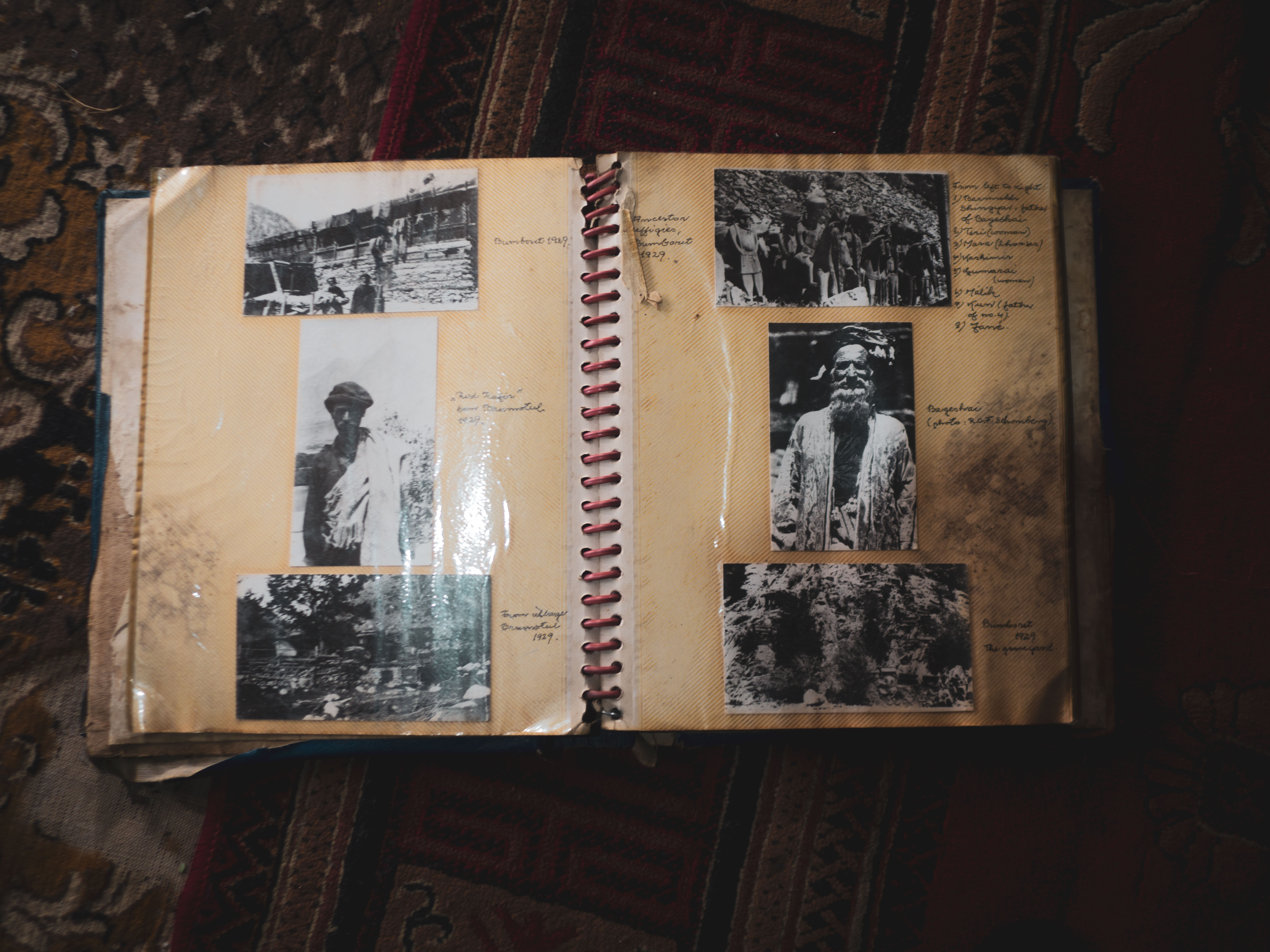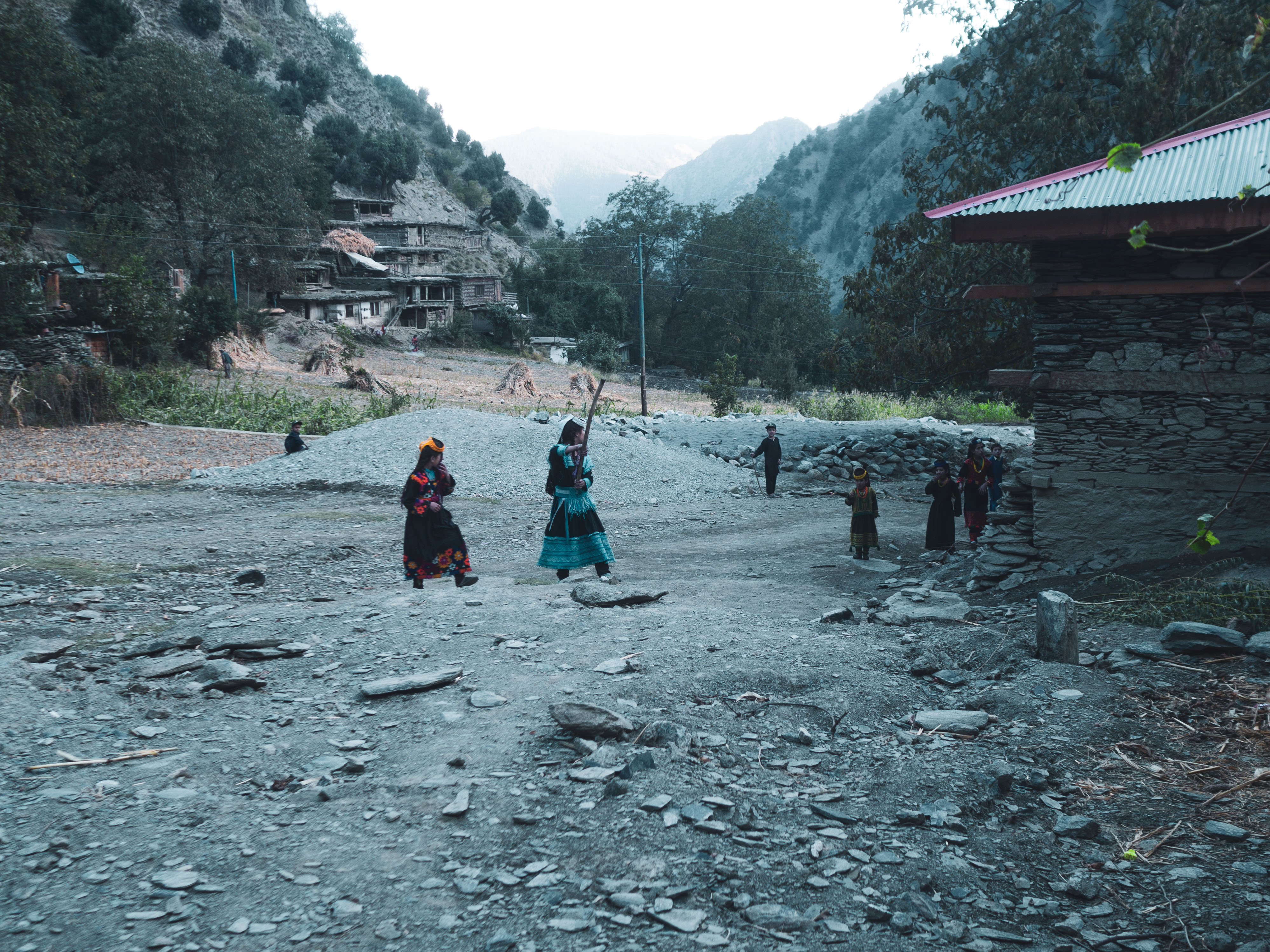Hidden away in the remote northwestern corner of Pakistan just a few kilometers east of the Afghan border, lie three valleys. The names of these valleys are Bumburet, Rumbur, and Birir. All three are home to spectacular mountain scenery and crystal-clear rivers, but above all, they are the home of the intriguing Kalasha people. The culture of the Kalasha has puzzled anthropologists for over a hundred years, and is unlike anything found anywhere else in Pakistan — or indeed the rest of the world. Their origins are shrouded in mystery, and legend has it that they are the descendants of officers in Alexander the Great's army. Traditionally they practice what authors characterize as a form of Animism, related to an ancient form of Hinduism. I consider myself incredibly fortunate to have been able to visit here. Just two weeks before my arrival a military check-post at the far end of Bumburet Valley was attacked by the Taliban, with a total of 16 people killed.
 |
A man returning from harvesting hay. In the forest in the background is the check-post the Taliban attacked two weeks prior.
|
 |
| This is Engineer, my host. He made my time in the Kalash Valleys unforgettable and is the proud owner of what is probably the biggest heart in Rumbur. He was the first person in the valleys to get a master's degree. His parents named him Engineer since they were unaware that this is an occupation, not a name. Once he realized this, Engineer considered changing his name but then decided to keep it, celebrating the fact that there is probably only one Engineer Khan in the world. |
 |
| After traveling in conservative areas and not having made eye contact with a woman in over two weeks, I was startled when this girl approached me and struck up a conversation in perfect Queen’s English. The blue dress she is wearing is the Kalasha school uniform. |
 |
| Engineer fording a river in front of the village of Shekhanandeh. The inhabitants of the village migrated here from the Nuristan Province of Afghanistan at the beginning of the 20th century, and another wave arrived during the Soviet invasion in the 1980s. The Nuristani people once had the same culture and practiced a faith very similar to that of the Kalash, but by now most have converted to Islam. |
 |
| A Kalasha washing line |
 |
| Grum Village, Rumbur |
 |
| This book found in a family home, contains photos from a Norwegian anthropologist who visited the area in the early 1900s. Alongside it was almost a hundred years worth of original correspondence between the researcher, his successors, and the family. |
 |
| Traditional Kalasha ancestor effigies |
 |
| Kalasha women harvesting walnuts |
 |
| Engineer’s wife harvesting corn |
 |
| Since the Kalasha are not Muslim, they happily produce their own moonshine |
 |
| Rumbur valley |
 |
| Girls playing in Grum village |















